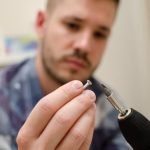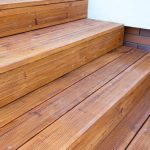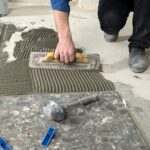Are you tired of dropped calls and slow internet speeds due to poor cell phone reception at home? In today’s digital age, a strong and reliable cellular signal is essential for staying connected, whether it’s for work, keeping in touch with family and friends, or simply browsing the web. In this article, we will explore various ways to improve poor cell phone reception at home, helping you to stay connected without frustration.
First and foremost, understanding the importance of good cell phone reception at home is crucial. Whether you live in a suburban neighborhood or a rural area, factors such as building materials, distance from cell towers, and electronic interference can all contribute to weak signals. Recognizing the impact of these factors will allow you to take proactive steps to address poor reception and enhance your overall connectivity experience.
In the following sections, we will delve into the causes of poor cell phone reception, how to conduct a signal strength test within your home, tips on positioning your Wi-Fi router for improved reception, the benefits of using a cell phone signal booster, methods for eliminating interference, and updating your phone and network settings. Additionally, we’ll explore alternative solutions such as Wi-Fi calling and network extenders that can further enhance your cell phone reception at home.
By implementing these strategies, you can ensure that poor cell phone reception doesn’t hinder your ability to communicate effectively from the comfort of your own home.
Causes of Poor Cell Phone Reception
Poor cell phone reception at home can be attributed to various factors that contribute to weak signals. One of the most common causes is the distance from the nearest cell tower. The farther your home is from a cell tower, the weaker the signal will be. Additionally, obstructions such as buildings, trees, and geographical features can also interfere with the signal, leading to poor reception.
Another factor that contributes to poor cell phone reception is the material of your home. Certain building materials like metal, concrete, and low-emissivity glass can weaken cellular signals or block them altogether. This is especially true for basement areas or homes with thick walls and metal roofs.
In addition to external factors, internal interference within your home can also affect cell phone reception. Electronic devices such as microwave ovens, cordless phones, and even fluorescent lights can produce electromagnetic interference that disrupts cellular signals. Identifying and addressing these factors can significantly improve cell phone reception within your home.
| Cause | Impact |
|---|---|
| Distance from Cell Tower | Weaker signal with greater distance |
| Building Materials | Metal, concrete, and low-emissivity glass weaken or block signals |
| Internal Interference | Microwaves, cordless phones, and fluorescent lights disrupt cellular signals |
Conduct a Signal Strength Test
Conducting a signal strength test is an essential step in understanding the areas of your home that have poor cell phone reception. There are several ways to check the current signal strength in different parts of your house. Most smartphones have a built-in feature that allows you to see the strength of the cellular signal.
You can usually find this information in the settings menu of your phone, under “About Phone” or “Network.” By checking the signal strength in various areas, you can identify the spots with the weakest reception and focus on improving those areas.
In addition to using your smartphone to check signal strength, there are also external devices available that can provide more detailed information about cellular signals in your home. Signal detector apps and cellular signal meters are tools that can be used to measure the actual decibel-milliwatts (dBm) of the cell phone signal at specific locations within your home. This data can help you pinpoint problem areas and determine if certain rooms or floors have better reception than others.
Once you have identified areas with poor cell phone reception, you can begin implementing solutions to improve the signal quality in those areas. This could include repositioning your Wi-Fi router, installing a cell phone signal booster, or making changes to reduce electronic interference within your home. By conducting a thorough signal strength test, you will be better equipped to address weak reception and ensure that you have reliable cellular service throughout your entire home.
| Signal Strength Testing Methods | Benefits |
|---|---|
| Smartphone built-in feature | Quick and easy way to check signal strength |
| Signal detector apps and cellular signal meters | Provide detailed dBm measurements for accurate analysis |
Positioning Your Router
When it comes to improving cell phone reception at home, the position of your Wi-Fi router plays a crucial role. Here are some tips on finding the best location for your router to ensure better cell phone reception:
1. Centralize your router: Placing your Wi-Fi router in a central location within your home can help distribute the signal more evenly, allowing for better coverage in all areas of your house.
2. Avoid obstructions: Keep your router away from large objects such as walls, metal appliances, and other electronic devices that can obstruct the signal. This will prevent interference and help improve cell phone reception.
3. Elevate the router: Positioning your Wi-Fi router at an elevated level, such as on a high shelf or mounted on the wall, can help extend its range and improve overall signal strength throughout your home.
By following these tips and ensuring that your Wi-Fi router is strategically positioned within your home, you can significantly enhance the cell phone reception in various areas of your house. In addition to these steps, it is also important to consider other factors that may affect cell phone reception, such as interference and outdated network settings. Taking a comprehensive approach to address these issues can lead to noticeable improvements in cell phone reception at home.
Using a Cell Phone Signal Booster
Understanding Cell Phone Signal Boosters
A cell phone signal booster is a device designed to improve cell phone reception by amplifying existing signals. It consists of three main components: an external antenna, an amplifier, and an internal antenna. The external antenna is placed outside the home to capture the existing weak signal, which is then transmitted to the amplifier. The amplifier strengthens the signal and sends it to the internal antenna, which broadcasts the enhanced signal within the home.
The Benefits of Using a Signal Booster
One of the primary benefits of using a cell phone signal booster is improved call quality and faster data uploads and downloads. With better reception, dropped calls become less frequent, and internet browsing or streaming becomes more seamless. Additionally, a stronger cell phone signal can help extend your phone’s battery life as it consumes less power searching for a stable connection.
Installation Process
To install a signal booster, start by choosing an optimal location for the external antenna where it can capture the best possible signal. Mount the external antenna securely in this location before connecting it to the amplifier inside your home.
Once connected, place the internal antenna in an area where you need improved reception and connect it to the amplifier as well. Lastly, plug in the power supply for the amplifier, and you should notice improved cell phone reception throughout your home after completing these steps.
Eliminating Interference
Electromagnetic interference can significantly impact cell phone reception in your home. Addressing and reducing electronic interference can greatly improve the quality of your cellular signal. Here are some tips on how to minimize electronic interference for better reception:
- Identify Electronic Devices: Make a list of all the electronic devices in your home, such as microwaves, cordless phones, baby monitors, and Bluetooth devices that may be causing interference with your cell phone signal.
- Relocate Electronic Devices: Once you’ve identified the potential sources of interference, try to move them away from areas where you typically use your phone. For example, keep cordless phones and baby monitors away from areas where you make important calls or receive texts.
- Upgrade to Wired Connections: Consider using wired connections instead of wireless connections for devices like printers, smart TVs, and gaming consoles to reduce the overall wireless activity in your home.
In addition to these tips, it’s also a good idea to invest in shielding materials or devices that can help minimize electromagnetic interference in your living space. By reducing electronic interference, you can create a more favorable environment for strong and consistent cell phone reception throughout your home.
Ultimately, addressing electronic interference is an important step in improving poor cell phone reception at home. By analyzing potential sources of interference and taking proactive measures to minimize their impact, you can enjoy better cellular signal strength and reliability for all your communication needs.
Updating Your Phone and Network Settings
Check for Software Updates
One of the simplest ways to ensure that your phone is optimized for better reception is by checking for software updates. Manufacturers regularly release updates to improve network connectivity and fix any bugs that may be affecting your phone’s performance. To check for updates, simply go to your phone’s settings, navigate to “About Phone,” and select “System Update” or “Software Update”.
Network Settings Optimization
In addition to updating your phone’s software, optimizing your network settings can also significantly improve poor cell phone reception at home. You can start by resetting your network settings, which will erase all saved Wi-Fi networks and Bluetooth connections. This can help clear any issues that may be causing interference with your cellular signal.
Preferred Network Type
Another important setting to check is your preferred network type. Depending on your location, certain network types like 4G LTE or 5G may provide a stronger and more stable connection compared to others such as 3G or 2G. By selecting the optimal network type in your phone’s settings, you can ensure that you are accessing the best possible signal available in your area.
By updating both your phone’s software and optimizing its network settings, you can maximize your chances of improving poor cell phone reception at home without having to invest in additional hardware or services.
Alternative Solutions
In conclusion, there are various options available for improving poor cell phone reception at home. Wi-Fi calling and network extenders are two alternative solutions that can significantly enhance the signal strength within your household. By using Wi-Fi to make calls, you can bypass traditional cell towers and enjoy clearer conversations. Network extenders, on the other hand, amplify the signal within your home, ensuring a stronger connection for better call quality and data usage.
In addition to these alternative solutions, it’s important to consider updating your phone and network settings regularly to ensure optimal reception. By staying on top of software updates and network settings, you can maximize the signal strength and minimize potential issues that may be causing poor cell phone reception.
Ultimately, improving poor cell phone reception at home requires a combination of troubleshooting steps and implementing alternative solutions such as Wi-Fi calling, network extenders, and keeping your devices updated. By taking these measures, you can enjoy reliable and clear communication without having to deal with frustrating dropped calls or slow data speeds within the comfort of your own home.
Frequently Asked Questions
How Can I Boost My Cell Phone Signal in My House?
Boosting your cell phone signal in your house can be done by using a signal booster or a femtocell. A signal booster amplifies the existing signal, while a femtocell creates a mini-cell tower in your home.
You can also improve your signal by keeping your phone charged and updated, removing any obstacles between you and the nearest cell tower, and connecting to Wi-Fi for calling and texting.
Do Homemade Cell Phone Signal Boosters Really Work?
Homemade cell phone signal boosters may not always be reliable or effective. While some DIY methods like using aluminum foil or a copper wire may show temporary improvement, they are not recommended as a long-term solution. Additionally, homemade boosters could interfere with the overall network performance and cause more harm than good.
How Can I Boost My Mobile Signal Strength at Home for Free?
Boosting your mobile signal strength at home for free can be achieved by simple measures such as repositioning yourself closer to windows or higher floors, avoiding interference from electronics or household appliances, and using Wi-Fi calling when available.
You can also try resetting your network settings, updating your device’s software, or reaching out to your carrier for assistance with troubleshooting any specific issues at your location.

I’m thrilled to have you here as a part of the Remodeling Top community. This is where my journey as an architect and remodeling enthusiast intersects with your passion for transforming houses into dream homes.





